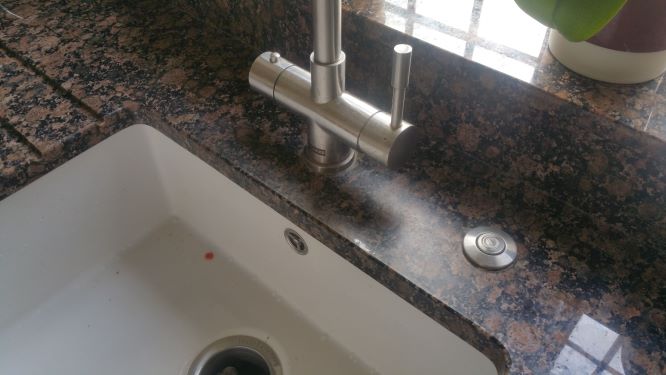Limescale is a common problem in many towns and cities around the world, we all know how unsightly it is and the problems it can cause with our appliances.
What is confusing is which is the best chemical, method or formula etc for removing limescale from natural stone.
Will the chemical affect the seal and does the worktop need to be re-sealed afterwards?
Chemicals that you use on man made surfaces like Corian, Melamine and Composite Worktops are not suitable for natural stone.
Is the chemical safe to use around taps or should they be protected first?
So many questions and sometimes we end up doing nothing for fear of spoiling our expensive granite worktops.
This is a simple method I use to safely remove limescale from a granite worktop without using corrosive chemicals and spoiling your polished metal taps. It is not a five-minute-fix. It will require some time and a little effort, but the results and peace of mind are worth it.
THE MAIN POINTS ARE:
- Easy to find tool and materials
- Wetting the area
- Removing the limescale
- Stubborn areas
- Dry the surface
- Polishing the worktop
- Avoiding limescale build up in the future
Easy to find tool and materials
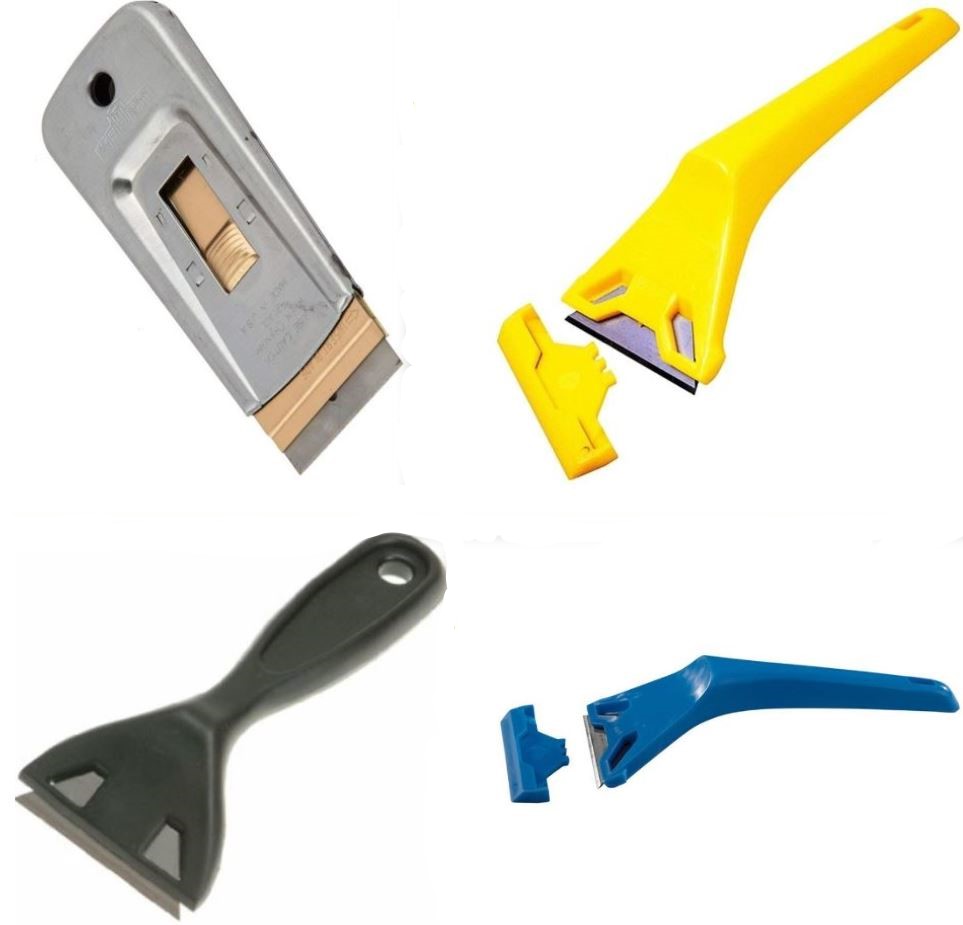
You will need a single window scraper with a new blade like the examples in the photo.
If you already have one swap the blade out for a new one even if it has only been used a few times it will be too blunt for what we want to do. If the blade is old and rusty change it as it will scratch the surface of the stone.
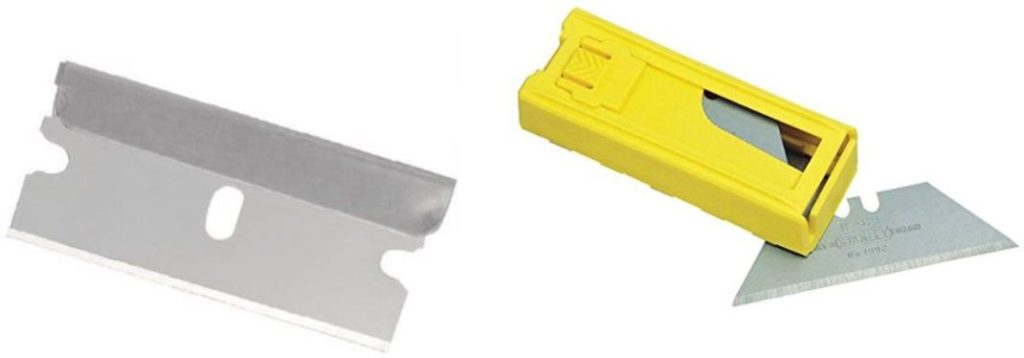
Changing the blade for a new one will make the job a lot easier. Depending on where you are these scrapers can be bought for just a few pounds in all DIY and Hardware stores or large supermarkets, and a replacement pack of blades would be of a similar price.
Do not use an ordinary paint or wallpaper scraper or a filler knife they are not sharp enough for this process and may scratch the surface of the stone.
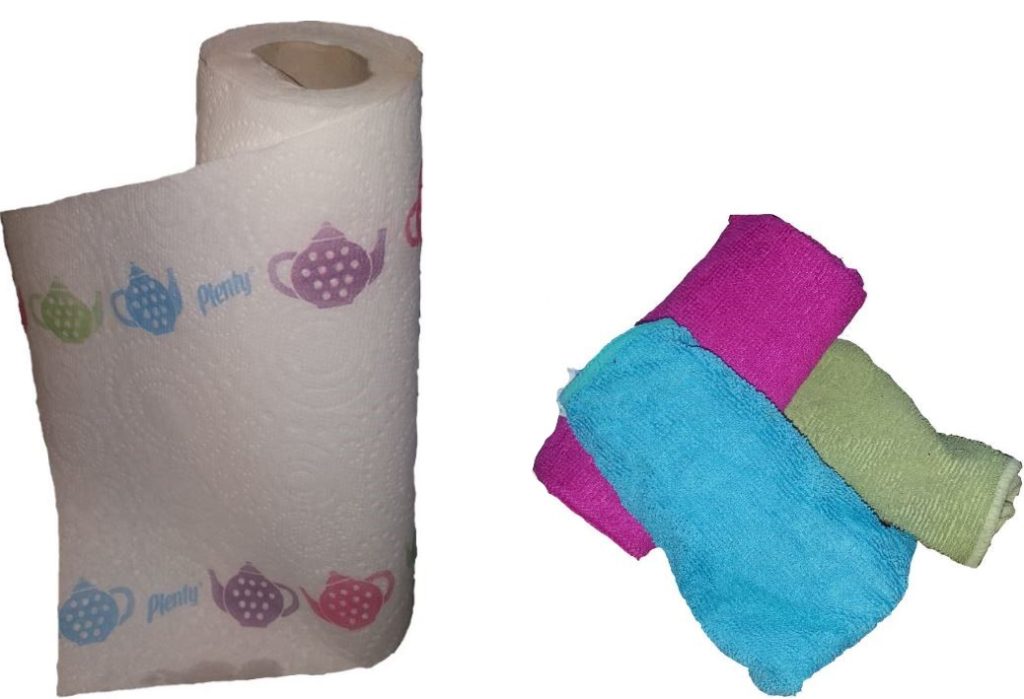
You will need a selection of clean cloths; micro fibre cloths are best but ordinary clean and dry dish cloth are just as good or you can use a roll of a good quality kitchen paper towels.
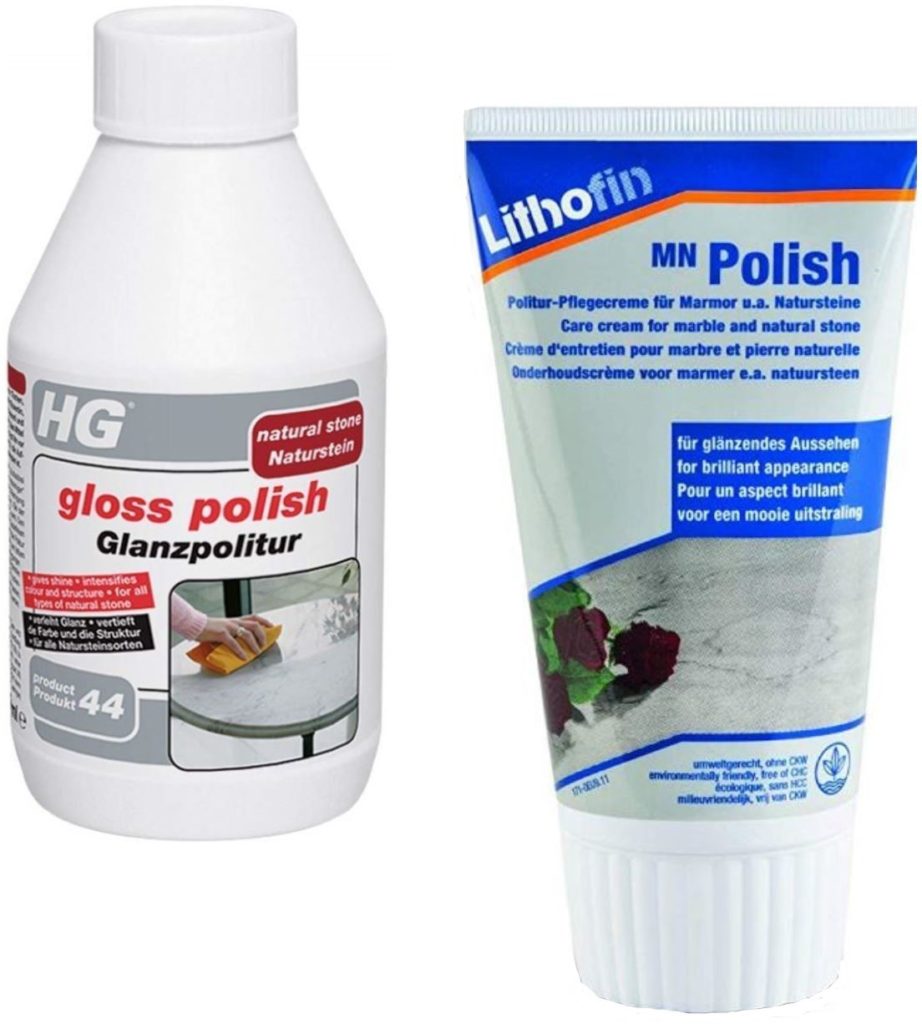
Finally, you will need some marble or granite polish there are many brands available. The most common brands are Method, Lithofin and HG. I personally use Lithofin or HG polishes, but if you already have a brand that you are happy with there is no need to change.
Wetting the area
To start with use one of your cloths to wet a small area. It does not have to be loads of standing water. The best way is to wet your cloth with hot or cold water and place it on an area to be cleaned and leave it for a minute or two to soften the limescale. If you have a heavy build-up of limescale saturate the cloth with water and leave it on the area for about 10 to 15 minutes.

Unlike chemicals where it is not advisable to leave them to soak into natural stone, you are safe with water.
I find the worst areas of limescale are around the base of the taps and the drainer, so leave these two areas until last. Wrap a wet cloth around the base of the taps and spread a wet cloth or two over the drainer. Periodically pour some water on them to keep the cloths as wet as possible while you are working on the other areas.

Removing the limescale
After just a few minutes the limescale will soften enough for you to remove it. Using the scraper tool and keeping the blade flat on surface of the stone, gently scrape off the limescale from the surface of the stone.

As you scrape of the limescale you will be drying the stone so just wet again with your cloth if all of the limescale has not been removed. The more you keep the blade lubricated on the surface of the stone the easier it is to remove the limescale.
Do not dig the corner edges of the blade into the stone or you will scratch it

Continue wetting the stone and scrapping off the limescale until complete. Do not chip it you should be able to remove the limescale with a smooth action and you should not have to use a lot of force to do this.
Stubborn areas
You may have some stubborn areas where the limescale is quite thick, do not force it or dig the edges of the blade into the stone or you will scratch it. Simply apply your cloth to the area and saturate it with water and leave it for 3 or 4 times as long as you had left it previously.
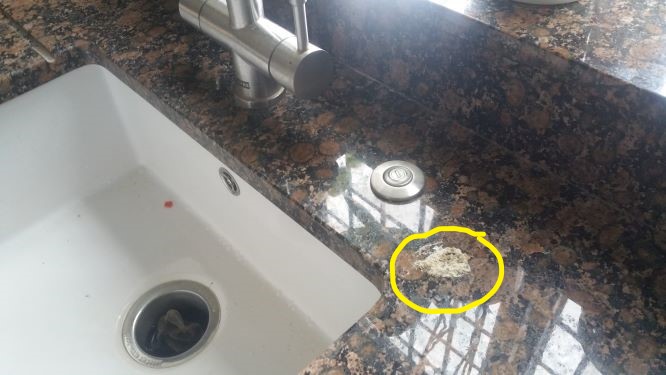
The longer you leave it the softer the limescale will become, do not allow the area to dry out until you have completed the task.
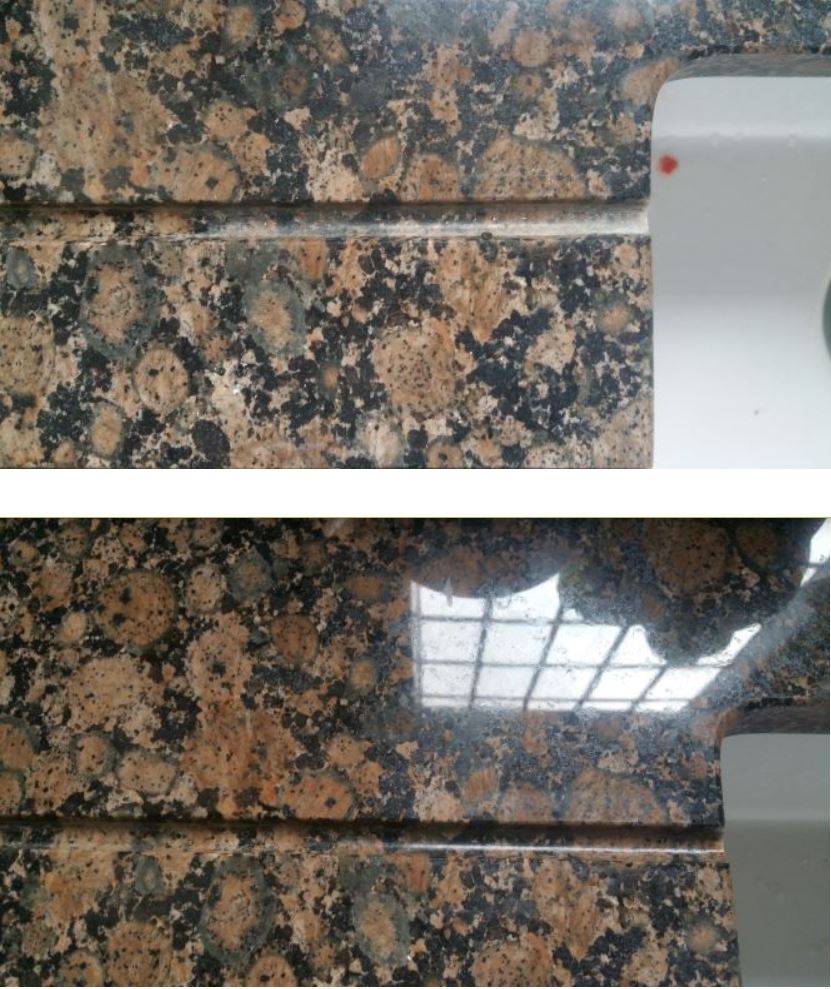
Dry the surface
Once you have completely removed all the limescale from the surface of your granite worktop, wash it down with plenty of clean water and flush away all the loose bits of limescale. Buff dry the stone use 2 or 3 dry cloths if necessary.
Do not leave the stone to dry by itself, buff it dry
Polishing the worktop
Once the stone is completely dry you can now polish with your chosen brand of polish. If the limescale had been there for a long time you may find the stone is a little lighter in colour. To help restore the colour apply a small amount of polish with a clean dry cloth or paper towel to these areas and work the polish into the stone until it fully absorbed into the stone.
Once you have applied the polish to the lighter coloured areas if any, you can now polish the rest of the worktop. Most natural stone polishes require that you apply them in a thin coat and leave the polish on the surface for no more than a minute or two and then buff it to a shine. If you want it to shine a little more repeat the process but only apply a very little at a time and work in small areas. Do not try to polish the whole countertop in one go because the polish will be too dry as you work from one end to the other, and it is hard work to remove the streaks left by applying too much polish at one time.
If the areas that had a lot of limescale on them are still a bit light in colour, repeat this process to the worst areas daily until the colour is restored. Be sure that the area is completely dry before you do so, or you will just be wasting your time and polish.

Avoiding limescale build up in the future
This may seem obvious, but it is something often neglected. Dry the surface of the stone do not leave it to dry by itself. Even if you have just wiped it down with a hot damp cloth, always buff it dry afterwards. Keep a clean dry cloth handy and get into the habit of blotting spills and buffing the surface of your counter top until completely dry.
Regularly check under your soap dispensers and if you have a tray or matt covering the drainer check under them daily. Wipe and buff these areas dry. If you can, leave the drainer uncovered for a few hours each day.
Replace washers to leaking taps as soon as you can, the sooner it is fixed the less likely you are to have to have any limescale building up around the taps. If the taps need replacing, do so as soon as possible. Sometimes if the taps are covered in limescale and have seized up it will cost you a lot more to fix or replace them.
